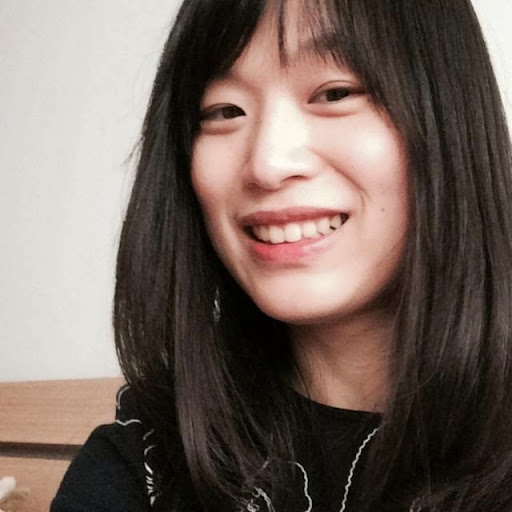Rong Chen
age ~39
from Palo Alto, CA
Rong Chen Phones & Addresses
- Palo Alto, CA
- Sunnyvale, CA
- Las Vegas, NV
- Torrance, CA
- Los Angeles, CA
- San Gabriel, CA
- Rochester, NY
- Alhambra, CA
Real Estate Brokers

Rong Chen, Las Vegas NV Agent
view sourceWork:
Century 21
Las Vegas, NV
(702)8765881 (Phone)
Las Vegas, NV
(702)8765881 (Phone)
Lawyers & Attorneys

Rong Chen - Lawyer
view sourceLicenses:
New York - Currently registered 2004
Education:
University of Pennsylvania Law School

Rong Chen - Lawyer
view sourceOffice:
Clifford Chance LLP
Specialties:
Banking & Finance
Capital Markets
Capital Markets
ISLN:
921409210
License Records
Rong Chen
Address:
Las Vegas, NV 89103
License #:
PM.0165969 - Active
Category:
Property Manager
Issued Date:
Nov 25, 2013
Expiration Date:
Feb 28, 2017
License #:
S.0059839 - Active
Category:
Property Manager
Issued Date:
Feb 18, 2004
Expiration Date:
Feb 28, 2017
Rong Chen
Address:
Las Vegas, NV 89103
License #:
PM.0165969 - Active
Category:
Salesperson
Issued Date:
Nov 25, 2013
Expiration Date:
Feb 28, 2017
License #:
S.0059839 - Active
Category:
Salesperson
Issued Date:
Feb 18, 2004
Expiration Date:
Feb 28, 2017
Us Patents
-
Fabrication Method Of Size-Controlled, Spatially Distributed Nanostructures By Atomic Layer Deposition
view source -
US Patent:8084087, Dec 27, 2011
-
Filed:Feb 14, 2008
-
Appl. No.:12/070367
-
Inventors:Stacey F. Bent - Stanford CA, US
Rong Chen - Sunnyvale CA, US
Xirong Jiang - Stanford CA, US
Marja N. Mullings - Stanford CA, US
Yuji Saito - Tokyo, JP -
Assignee:The Board of Trustees of the Leland Stanford Junior University - Palo Alto CA
Honda Motor Co., Ltd. - Tokyo -
International Classification:C23C 16/00
-
US Classification:42725528, 4272481, 42725511
-
Abstract:A method of growing spatially-separated and size-controlled particles on substrate surfaces is provided. The method utilizes chemical modification of the substrate surface, an atomic layer deposition (ALD) system, providing a modified layer to the substrate surface and providing an ALD material for nanoparticle deposition. The method induces a Volmer-Weber growth method, where islands of the nanoparticles are formed on the surface. The modified layer controls a number of nucleation sites on the surface, where controlling the number of ALD cycles limits an amount of deposited the material for discrete the nanoparticles. The modified layer can include self-assembled monolayers, modified hydrophobicity of the surface, H-terminated surfaces, and varying functional groups within the modified layer, where thermally attached alkenes, photochemically attached alkenes, thermally attached alkynes or photochemically attached alkynes are attached to the H-terminated surfaces, and the density of the nucleation sites of the nanoparticles are thereby managed.
-
Method For Recess Etching
view source -
US Patent:20080146034, Jun 19, 2008
-
Filed:Dec 12, 2007
-
Appl. No.:11/954981
-
Inventors:MEIHUA SHEN - Fremont CA, US
RONG CHEN - Sunnyvale CA, US
Scott M. Williams - Belmont CA, US -
Assignee:APPLIED MATERIALS, INC. - Santa Clara CA
-
International Classification:H01L 21/311
-
US Classification:438700, 257E21249
-
Abstract:Methods for recess etching are provided herein that advantageously improve lateral to vertical etch ratio requirements, thereby enabling deeper recess etching while maintaining relatively shallow vertical etch depths. Such enhanced lateral etch methods advantageously provide benefits for numerous applications where lateral to vertical etch depth ratios are constrained or where recesses or cavities are desired to be formed. In some embodiments, a method of recess etching includes providing a substrate having a structure formed thereon; forming a recess in the substrate at least partially beneath the structure using a first etch process; forming a selective passivation layer on the substrate; and extending the recess in the substrate using a second etch process. The selective passivation layer is generally formed on regions of the substrate adjacent to the structure but generally not within the recess. The first and second etch processes may be the same or different.
-
Etching And Passivating For High Aspect Ratio Features
view source -
US Patent:20080286978, Nov 20, 2008
-
Filed:May 17, 2007
-
Appl. No.:11/749957
-
Inventors:Rong Chen - Sunnyvale CA, US
Tae Won Kim - San Jose CA, US
Nicolas Gani - San Jose CA, US
Anisul H. Khan - Santa Clara CA, US -
International Classification:H01L 21/302
-
US Classification:438713, 257E21214
-
Abstract:An etch method includes etching a masked substrate to form a recess with a first sidewall in the substrate. A thin surface layer of the substrate on the first sidewall is then converted into a passivation layer. The masked substrate is etched again to deepen the recess in the substrate. A surface layer of the substrate on the second sidewall of the recess is then converted into a passivation layer. In one embodiment, upon removal of the passivation layers from both sidewalls, the first and second sidewalls of the high aspect ratio recess are aligned to within 10 Å of each other to provide a high aspect ratio recess having a vertical profile.
-
Method And Apparatus For Tunable Isotropic Recess Etching Of Silicon Materials
view source -
US Patent:20090032880, Feb 5, 2009
-
Filed:Aug 3, 2007
-
Appl. No.:11/833481
-
Inventors:Mark Naoshi Kawaguchi - Sunnyvale CA, US
Meihua Shen - Fremont CA, US
Hiroki Sasano - Sunnyvale CA, US
Rong Chen - Sunnyvale CA, US -
International Classification:H01L 29/94
H01L 21/302
H01L 21/311 -
US Classification:257369, 438703, 438710, 257E29345, 257E21214, 257E21246
-
Abstract:Methods and apparatuses to etch recesses in a silicon substrate having an isotropic character to undercut a transistor in preparation for a source/drain regrowth. In one embodiment, a cap layer of a first thickness is deposited over a transistor gate stack and spacer structure. The cap layer is then selectively etched in a first region of the substrate, such as a p-MOS region, using a first isotropic plasma etch process and a second anisotropic plasma etch process. In another embodiment, an at least partially isotropic plasma recess etch is performed to provide a recess adjacent to the channel region of the transistor. In a particular embodiment, the plasma etch process provides a recess sidewall that is neither positively sloped nor more than 10 nm re-entrant.
-
Methods For Monitoring Allograft Rejection
view source -
US Patent:20120165207, Jun 28, 2012
-
Filed:Feb 12, 2010
-
Appl. No.:13/148458
-
Inventors:Atul J. Butte - Stanford CA, US
Rong Chen - Fremont CA, US
Minnie M. Sarwal - Portola Valley CA, US
Tara Sigdel - Palo Alto CA, US -
Assignee:The Board of Trustees of the Leland Stanford Junior University - Palo Alto CA
-
International Classification:G01N 33/566
C40B 30/04 -
US Classification:506 9, 435 792, 435 71, 435 721
-
Abstract:Methods are provided for monitoring an allograft recipient for a rejection response, e.g., to predict, to diagnose, and/or to characterize a rejection response. In practicing the subject methods, the level of at least one protein in a sample from the allograft recipient, e.g., serum, urine, blood, CSF, tears or saliva, is evaluated, to monitor the subject. Also provided are compositions, systems, and kits that find use in practicing the subject methods.
-
Charge Storage Device, Method Of Making Same, Method Of Making An Electrically Conductive Structure For Same, Mobile Electronic Device Using Same, And Microelectronic Device Containing Same
view source -
US Patent:20130016452, Jan 17, 2013
-
Filed:Apr 2, 2010
-
Appl. No.:13/637795
-
Inventors:Donald S. Gardner - Mountain View CA, US
Eric C. Hannah - Pebble Beach CA, US
Rong Chen - Sunnyvale CA, US
John L. Gustafson - Pleasanton CA, US -
Assignee:INTEL CORPORATION - Santa Clara CA
-
International Classification:H01G 9/00
-
US Classification:361502
-
Abstract:In one embodiment a charge storage device includes first () and second () electrically conductive structures separated from each other by a separator (). At least one of the first and second electrically conductive structures includes a porous structure containing multiple channels (). Each one of the channels has an opening () to a surface () of the porous structure. In another embodiment the charge storage device includes multiple nanostructures () and an electrolyte () in physical contact with at least some of the nanostructures. A material () having a dielectric constant of at least 3.9 may be located between the electrolyte and the nanostructures.
-
Phased Whole Genome Genetic Risk In A Family Quartet
view source -
US Patent:20130080068, Mar 28, 2013
-
Filed:Apr 13, 2012
-
Appl. No.:13/445925
-
Inventors:Frederick Dewey - Redwood City CA, US
Euan Ashley - Menlo Park CA, US
Carlos Daniel Bustamante - Emerald Hills CA, US
Atul Butte - Menlo Park CA, US
Jake Byrnes - San Francisco CA, US
Rong Chen - Fremont CA, US -
Assignee:The Board of Trustees of the Leland Stanford Junior University - Palo Alto CA
-
International Classification:G06F 19/12
-
US Classification:702 19
-
Abstract:An embodiment of the present invention is a methodology for prioritizing variants relevant to inherited Mendelian (“single gene”) disease syndromes according to disease phenotype, gene, and variant level information.
-
Charge Storage Device, Method Of Making Same, Method Of Making An Electrically Conductive Structure For Same, Mobile Electronic Device Using Same, And Microelectronic Device Containing Same
view source -
US Patent:20160268065, Sep 15, 2016
-
Filed:May 25, 2016
-
Appl. No.:15/163798
-
Inventors:- Santa Clara CA, US
Eric C. Hannah - Pebble Beach CA, US
Rong Chen - Sunnyvale CA, US
John L. Gustafson - Pleasanton CA, US -
Assignee:Intel Corporation - Santa Clara CA
-
International Classification:H01G 11/86
H01G 11/24
H01G 11/52 -
Abstract:In one embodiment a charge storage device includes first () and second () electrically conductive structures separated from each other by a separator (). At least one of the first and second electrically conductive structures includes a porous structure containing multiple channels (). Each one of the channels has an opening () to a surface () of the porous structure. In another embodiment the charge storage device includes multiple nanostructures () and an electrolyte () in physical contact with at least some of the nanostructures. A material () having a dielectric constant of at least 3.9 may be located between the electrolyte and the nanostructures.
Medicine Doctors

Rong Chen
view sourceSpecialties:
Neurology
Work:
Carle Physician Group
200 Lerna Rd S, Mattoon, IL 61938
(217)2585900 (phone), (217)2583682 (fax)
Carle Physicians Group Neurosciences
602 W University Ave, Urbana, IL 61801
(217)3833440 (phone), (217)3833171 (fax)
200 Lerna Rd S, Mattoon, IL 61938
(217)2585900 (phone), (217)2583682 (fax)
Carle Physicians Group Neurosciences
602 W University Ave, Urbana, IL 61801
(217)3833440 (phone), (217)3833171 (fax)
Education:
Medical School
Zhejiang Med Univ, Hangzhou, Zhejiang, China
Graduated: 1985
Zhejiang Med Univ, Hangzhou, Zhejiang, China
Graduated: 1985
Conditions:
Epilepsy
Migraine Headache
Multiple Sclerosis (MS)
Parkinson's Disease
Peripheral Nerve Disorders
Migraine Headache
Multiple Sclerosis (MS)
Parkinson's Disease
Peripheral Nerve Disorders
Languages:
Chinese
English
Spanish
English
Spanish
Description:
Dr. Chen graduated from the Zhejiang Med Univ, Hangzhou, Zhejiang, China in 1985. He works in Mattoon, IL and 1 other location and specializes in Neurology. Dr. Chen is affiliated with Carle Foundation Hospital.
Name / Title
Company / Classification
Phones & Addresses
President
Brocade Group, Inc
Nonclassifiable Establishments
Nonclassifiable Establishments
756 S Spg St, Los Angeles, CA 90014
13 Night Star, Irvine, CA 92603
13 Night Star, Irvine, CA 92603
President
PERFECT WORLD PICTURES, INC
101 Redwood Shr Pkwy, Redwood City, CA 94065
1001 E Hillsdale Blvd, San Mateo, CA 94404
1001 E Hillsdale Blvd, San Mateo, CA 94404
Managing
Corner Capital Investments, LLC
Real Estate Ownership and Management
Real Estate Ownership and Management
1901 1 Ave, San Diego, CA 92101
4955 Via Papel, San Diego, CA 92122
1051 N Glassell St, Orange, CA 92867
4955 Via Papel, San Diego, CA 92122
1051 N Glassell St, Orange, CA 92867
Managing
Langdon Palms LLC
Real Estate Ownership and Management · Nonclassifiable Establishments
Real Estate Ownership and Management · Nonclassifiable Establishments
4955 Via Papel, San Diego, CA 92122
8154 Langdon Ave, Van Nuys, CA 91406
(818)7857587
8154 Langdon Ave, Van Nuys, CA 91406
(818)7857587
Yiyi Life LLC
Business Services at Non-Commercial Site
Business Services at Non-Commercial Site
59 Esperanza Ave, Sierra Madre, CA 91024
6727 Rosemead Blvd, San Gabriel, CA 91775
6727 Rosemead Blvd, San Gabriel, CA 91775
Ways Investments, LLC
Investments
Investments
740 E Colorado Blvd, Pasadena, CA 91101
PO Box 60039, Pasadena, CA 91116
(626)2299888
PO Box 60039, Pasadena, CA 91116
(626)2299888
CONFILION, LLC
President
Rcl Corporation
6524 Giant Oak St, North Las Vegas, NV 89084
623 Snake Charmer Ave, North Las Vegas, NV 89031
623 Snake Charmer Ave, North Las Vegas, NV 89031
Classmates

Rong Chen
view sourceSchools:
Chickahominy Middle School Mechanicsville VA 2000-2004
Community:
Deb Smith, Alyssa Santuk, Sean Mcinerney, Lauren Michaux, Amanda Singleton

Chickahominy Middle Schoo...
view sourceGraduates:
Rong Chen (2000-2004),
Josh Halstead (2000-2004),
Emily Turner (1998-2002),
Adam Curtis (2001-2001)
Josh Halstead (2000-2004),
Emily Turner (1998-2002),
Adam Curtis (2001-2001)

Pace University, New york...
view sourceGraduates:
Rong Chen (2002-2005),
Margaret Carlo (2000-2002),
Yvette Padilla (2000-2006),
Karen Kelly (1986-1988),
Richard Martin (1993-1998),
Alice Rivera (1979-1981)
Margaret Carlo (2000-2002),
Yvette Padilla (2000-2006),
Karen Kelly (1986-1988),
Richard Martin (1993-1998),
Alice Rivera (1979-1981)

CUNY Kingsborough Communi...
view sourceGraduates:
Rong Chen (1999-2002),
Christine Cannizzo (1999-2001),
Barbara Ann Pinkall (1986-1988)
Christine Cannizzo (1999-2001),
Barbara Ann Pinkall (1986-1988)

Rong Fu Chen
view source
Rong Yao Chen
view source
Rong Chen
view source
Rong Chen
view source
Rong Chen
view source
Rong Chen
view source
Rong Chen
view source
Rong Chen
view sourceYoutube
Plaxo

Rong Chen
view sourceSymyx Technologies

Rong Chen
view sourceTBC
Flickr
Googleplus

Rong Chen
Education:
Tsinghua University

Rong Chen
About:
瘋狂死韓飯
Bragging Rights:
死大學生在麻將桌上討論專題

Rong Chen

Rong Chen
Bragging Rights:
有个小美女

Rong Chen

Rong Chen

Rong Chen

Rong Chen
News

Unexplained 'Genetic Superheroes' Overcome Disease Mutations
view source- However, one possibility is that these individuals also have other genes that somehow suppress these disease-causing mutations, preventing these people from getting sick, said study co-author Rong Chen, director of clinical genome informatics at the Icahn Institute of Genetics and Multiscale
- Date: Apr 11, 2016
- Category: Health
- Source: Google

'Buffer genes' may protect these 13 people from rare genetic diseases
view source- To test their idea, Friend, Schadt, Mount Sinai genomics expert Rong Chen, and co-workers gathered genetic data from more than 589,000 generally healthy adults who had donated their DNA for research. The bulk of them400,000 people whose genomes had been scanned for genetic markerscame from 23andMe
- Date: Apr 11, 2016
- Category: Health
- Source: Google
Get Report for Rong Chen from Palo Alto, CA, age ~39













